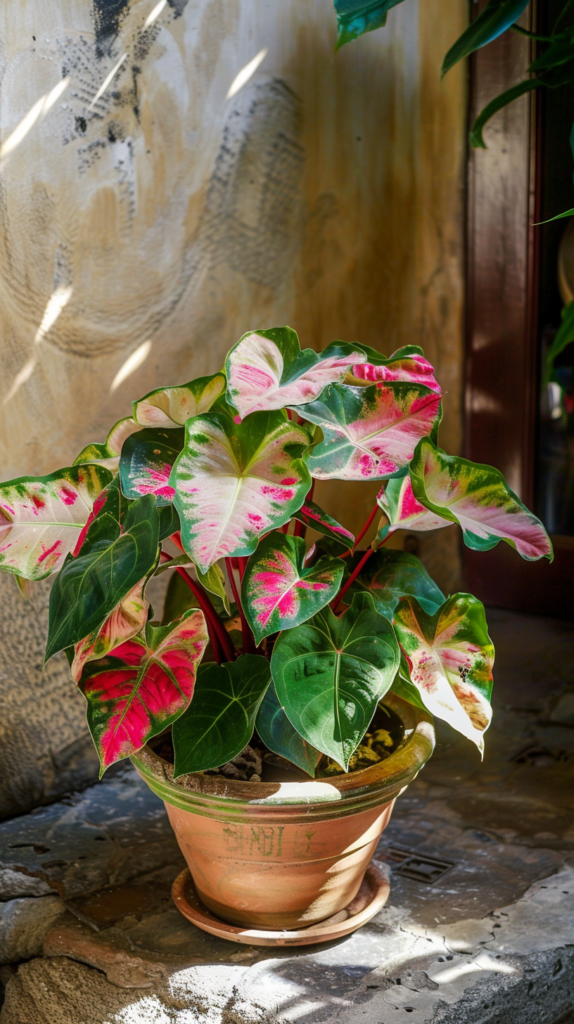Disclosure: Some links on this site are affiliate links. As Amazon Associates, we earn from qualifying purchases (at no cost to you).
It’s a gardener’s worst nightmare: you’ve nurtured and cared for your beloved plant, but suddenly it’s showing signs of distress. Don’t panic!
Many common issues can be remedied with some simple steps. Here’s a comprehensive guide to diagnosing and reviving your ailing plant.
1. Assess the Situation

The first step in reviving a dying plant is to assess its condition. Look for signs of distress such as yellowing leaves, drooping, wilting, or brown spots.
Understanding the specific symptoms can help you identify the underlying problem.
- Tip: Check the plant’s overall appearance, soil condition, and recent changes in its environment or care routine.
2. Check for Overwatering

Overwatering is one of the most common causes of plant distress.
Too much water can lead to root rot, which prevents the plant from absorbing nutrients properly.
- Signs: Yellowing leaves, mushy or black roots, and a foul smell from the soil.
- Solution: Allow the soil to dry out completely before watering again. Ensure the pot has proper drainage and consider repotting the plant with fresh, well-draining soil.
3. Check for Underwatering

Conversely, underwatering can also cause a plant to suffer.
Plants need consistent moisture to thrive, and prolonged dryness can lead to wilting and browning leaves.
- Signs: Dry, brittle leaves, soil pulling away from the sides of the pot, and drooping stems.
- Solution: Water the plant thoroughly, allowing excess water to drain out. Establish a regular watering schedule based on the plant’s specific needs.
4. Evaluate Light Conditions

Light is crucial for plant health.
Too much or too little light can cause stress and hinder growth.
- Signs of Too Much Light: Brown, scorched leaves, and leaf drop.
- Signs of Too Little Light: Leggy growth, pale leaves, and lack of new growth.
- Solution: Adjust the plant’s location. Move it to a brighter spot if it’s not getting enough light, or provide some shade if it’s getting too much direct sunlight.
5. Examine Soil Quality

Poor soil quality can prevent plants from thriving.
Soil that is compacted or lacks nutrients can hinder root growth and nutrient absorption.
- Signs: Stunted growth, yellowing leaves, and poor drainage.
- Solution: Repot the plant using high-quality potting mix appropriate for the plant type. Add organic matter or fertilizer to enrich the soil.
6. Inspect for Pests

Pests can wreak havoc on plants, causing significant damage if not addressed promptly. Common pests include aphids, spider mites, and scale insects.
- Signs: Visible insects, sticky residue on leaves, webbing, and distorted or discolored leaves.
- Solution: Remove pests manually or use insecticidal soap or neem oil. Isolate the affected plant to prevent the infestation from spreading.
7. Consider Humidity Levels

Many plants, especially tropical varieties, thrive in high humidity. Dry indoor air can cause leaf tips to brown and overall plant stress.
- Signs: Brown leaf edges, leaf drop, and lack of new growth.
- Solution: Increase humidity around the plant by misting regularly, using a humidifier, or placing a tray of water near the plant.
8. Look at Temperature

Extreme temperatures, both hot and cold, can stress plants. Most houseplants prefer a consistent temperature range.
- Signs: Drooping leaves, slow growth, and leaf discoloration.
- Solution: Keep plants away from drafts, heating vents, and cold windows. Maintain a stable temperature that is suitable for the specific plant.
9. Prune Damaged Leaves

Removing damaged or dead leaves can help a plant recover. Pruning encourages new growth and improves airflow around the plant.
- Signs: Dead or severely damaged leaves and stems.
- Solution: Use clean, sharp scissors or pruning shears to trim away the damaged parts. Be careful not to remove more than one-third of the plant at once.
10. Repotting

Sometimes, a plant outgrows its pot or the soil becomes too compacted. Repotting can provide the plant with fresh nutrients and more room to grow.
- Signs: Roots growing out of the drainage holes, soil dries out quickly, and stunted growth.
- Solution: Choose a pot that is one size larger than the current one and use fresh potting soil. Carefully transfer the plant to its new home, ensuring not to damage the roots.
FAQ
Q: How often should I water my houseplants? A: Watering frequency depends on the plant type, size, and environmental conditions. Generally, water when the top inch of soil feels dry. Avoid letting plants sit in waterlogged soil.
Q: How can I tell if my plant is getting enough light? A: Observe the plant’s growth and leaf color. Healthy, vibrant leaves and steady growth typically indicate sufficient light. Leggy growth and pale leaves suggest a need for more light.
Q: What are common signs of pest infestations? A: Look for visible insects, sticky residue on leaves, webbing, and distorted or discolored leaves. Act quickly to isolate and treat affected plants.
Q: Can I use tap water for my plants? A: Tap water is generally fine, but some plants are sensitive to chemicals like chlorine. Let tap water sit out overnight to allow chlorine to dissipate, or use filtered water.
Q: How do I increase humidity for my plants? A: Increase humidity by misting plants regularly, using a humidifier, or placing a tray of water near the plants. Grouping plants together can also create a microenvironment with higher humidity.
Final Thoughts
Reviving a dying plant requires patience and attention to detail. By assessing the situation and addressing issues like watering, light, soil quality, and pests, you can often bring your plant back to health. Remember, every plant is unique, so understanding its specific needs is key to successful care. With the right approach, you can transform your ailing plant into a thriving, vibrant addition to your home. Happy gardening!


